Body Armor – A Quick Overview
The moment I undertook the task of writing an article on body armor, I realized what a challenge this was only because, if you think about it, in the end, we are dealing with what could be a life-or-death situation – a subject matter which cannot, under any circumstance, be taken lightly as you would with most other tactical gear products that do not pose such a threat.As threats around us increase, paradoxically, so does the need to look for ways to protect ourselves and, whereas such protection was once mostly reserved for law-enforcement and military personnel, nowadays, there is a growing demand for protective gear among the civilian population as well, thus my urge to share some of the especially important topics which I shall be covering in this article today. For the sake of clarity, my approach today, throughout all the dissertations that follow, will be one where I will try my best to cover the different subjects or topics using a delicate balance of simplicity while at the same time complimenting such straightforwardness with whatever any such technical data, I may deem inherently critical to the subject matter in question.
In a Rush? Here’s the Quick List:
Soft Body Armor Level II & IIIA
- 1Armor Express Halo
- 2AR500 Armor
- 3Safe Life
- 4Body Armor Direct Freedom Vest
- 5Battle Steel
- 6Crye Precision LVS Base Vest Patrol Cut
- 7Premier Body Armor Eagle Tactical Vest
- 8Innocent Men’s “Bulletproof” Leather Jacket
What is Body Armor?
While there are all kinds of definitions floating around to describe what a body armor is, I chose the one published by the NIJ [National Institute of Justice], the research, development, and evaluation agency of the United States Department of Justice if only because of the trustworthiness offered by this agency in all matters governing body armors.According to the NIJ, the term body armor is usually associated with a ballistic vest, or a bullet-resistant vest designed to provide ballistic protection to the vital organs in the torso.
Typically, a vest contains two armor panels held in place by a carrier.
One panel protects the front of the torso, the other the rear.
To protect the sides of the torso, the vest is worn with the front panel overlapping the rear panel.The term body armor may also refer to items of clothing such as jackets and coats that have armor panels inserted into them.
In such a configuration, normal-seeming items of clothing take-on the role of armor carriers.
The term may also refer to accessory panels that are designed to provide ballistic protection to different areas of the body.
History of Body Armor
For centuries humanity has been attacking one another with all kinds of pointy objects, and for centuries man has been coming up with ways to defend himself from these objects – one of those ways has been using personal body armors.
Be it ancient warriors fully clad in leather covers, Samurais dressed in intricate shells, or medieval knights with their iconic shining plates, armors and shields one may say all such early versions of personal protection were, in fact, the origin of today’s’ more sophisticated body armor versions.If we fast-forward to the modern era, the creation of the true “body armor” as we know it today, directly followed the development of ranged weapons – no sooner had muskets come into use in the 16th Century, no sooner did soldiers sought to protect themselves against projectiles fired by these weapons.If I had to condense the history of body armors in just a few words, I would tie this history to the advent and development of firearms.
Matter of fact, one can readily conclude that body armor, historically, has been expanding, progressing, and growing relative to an ongoing race which paralleled the expansion of more powerful ballistic performance invariably outpacing the development of protective equipment.
The need to keep-up with ballistic performance improvements paved-the-way for the modernization of protective gear capable of affording the necessary protection needed for the prevailing ballistic upgrades and enhancements.
Is Body Armor Legal?
Quite often I am asked the question about the legality of body armor.
Currently, body armor is legal in all fifty states of the Union.
Federal law, however, prohibits the sale of body armor to convicted felons and that is about the only limitation that I know of.Some states may require buying your body armor in person.
Several manufacturers will not sell their armor to anyone outside the law-enforcement and/or military communities, but this is strictly a business decision not a legal one.
Bottom line on the legality subject, it is legal for law-abiding citizens to own and use body armor.
How Does Body Armor Work?
The safety of body armor is directly related to principles and laws of physics considering body armor is a garment or piece of equipment specifically designed to deflect, absorb, or disperse the kinetic energy of a projectile and minimize the blunt force trauma of a round.The development of body armor can be directly, entirely correlated and/or attributed to the advancements of ballistic capabilities throughout time.
Similarly, it is fair to say that the evolution of body armor, per se, can be traced to the discovery of certain materials which have been specifically identified as capable of effectively dispersing the energy of projectiles, thus at centerstage of all the challenges involving body armor.
What Are The Limitations Of Body Armor?
If there is one principle that we all need to understand primarily is that all body armor is not created equal thus my listing it as a common myth in the section below.
The performance of body armor is rated against rigid standards set by the National Institute of Justice [NIJ], which I will be discussing at length later in this article.As far as the NIJ standards are concerned, we should note there is a significant difference between an official NIJ certification and meeting NIJ standards.
Generally speaking, anyone can claim to meet NIJ standards or be “compliant” without any formal verification, however, to procure NIJ certification a manufacturer must submit their product(s) to an NIJ certified lab and have them undergo rigid stress testing before ballistic testing.
Products that pass stringent testing protocols will have a mark that says “NIJ Listed Model.” Products bearing the mark must still be re-tested periodically to maintain that listing.
Common Myths & Misconceptions About Body Armor
Myth #1: Bulletproof vs. Bullet Resistant
As coined in the legendary phrase “Elementary, my dear Watson” used by Sherlock Holmes, the fictional legendary detective created by the British author Sir Arthur Conan Doyle, when Holmes addressed his sidekick friend John A. Watson, there are some elementary myths relative to body armors, which beg for upfront clarification.So, to be sure, there is not such a thing as any “bulletproof” gear that I know of.
Again, there are no armors that can claim to be fully bulletproof.
The correct term or description for what many misconstrue to be bulletproof is, instead, bullet resistant – a significant difference, I may add, one which you should always keep in mind.
Myth No. 2 – Body Armor Cannot Protect Against All Types of Ammunition
Not all body armor can protect against all types of ammunition.
This is a common fallacy, and, again, it could not be further from the truth.
Matter of fact, the National Institute of Justice [NIJ] has gone to great lengths over the years in establishing parameters or protection levels that can be expected of body armor in general, all relative to shielding capabilities against diverse types of ammunition – more on this important subject-matter in the paragraphs that follow.
Myth No. 3 – Body Armor – The Infallible Aura
Often, folks tend to misunderstand or misinterpret the limits and limitations of body armor.
While it may be true that a bullet resistant armor can save your life by deferring a projectile’s forceful impact, it is just as true that such an impact can cause body armor wearers to experience bruising and other collateral body damage that results from what is commonly known as backface deformation – the allowance of certain amount of ‘push-back’ from a strike.
Myth No. 4 – All Body Armor Is Equal
Well, unlike the renowned sentence in the US Declaration of Independence which says, “all men are created equal,” the very opposite holds true for body armor – all body armor is not created equal, while many disingenuously think otherwise.
In fact, body armor is as versatile as you can get compared to most other tactical gear.
Talk about sizes, styles, material composition, protection level, mission objective, on and on.
Added all up and soon you have grown your alternatives exponentially.
As part of my dissertation today, I will be covering some of the most relevant options available in this extraordinarily complex universe.
Types of Body Armor
Soft and Hard Body Armor
So, there are two basic kinds of body armor: soft armor and hard armor.
Soft body armor consists of flexible panels of ballistic resistant materials.
Soft armor is designed to protect against assaults with handguns.
It is also intended to be used for extended daily wear.
This is the type of armor typically worn by many law-enforcement agencies while executing their daily duties.Soft body armor can be worn either over or under a uniform or clothing in an external carrier.
If worn under a uniform it is called “concealable armor.”
Hard armor, on the other hand, consists of rigid panels or plates of ballistic-resistant materials, designed to offer users greater protection against higher threats than do soft armor.
Hard armor plates are used in tactical armor – a combination of hard armor plate and soft armor panels.
Ballistic vs. Edged-Blade Protection
A typical misconception in interpreting the functions of body armor is the assumption that bullet resistant vests will also protect the user from stabbing weapons.
Nothing further from the truth.
There are stab-resistant armors specifically designed to protect against edged knives or stabbing weapons and there are “combination armors” designed to protect against both firearms and edged or stabbing weapons, however, it is wrong to assume that armors are all-encompassing in the protection offered against different threats.
Stab, Spike and Edged Blade Protection
Many folks also use the words stab, spike, and edged blade interchangeably when referencing armor that protects against something other than ballistics.
Truth is all these represent different threats.
As we will discuss later under the “materials” section below, while stab proof vests utilize similar materials as those used in a bullet resistant vest, they also require added materials to stop edged weapons from penetrating the protective layers of fibers.
Just as ballistic protection will not protect against edged weapons.
Combination and Multi-Threat Armor
Combination armor is designed to protect against both firearms and edged or stabbing weapons.
While there is not such a thing as one-type-fits-all in body armor, it is nevertheless possible to purchase multi-threat armor which provides protection against diverse types of weapons or attacks.
For instance, it is possible to have plates in stab proof vests laminated to make them spike proof.
To be sure, a spiked weapon can be just as deadly as a knife.
For certain law-enforcement personnel such as security officers working in a jail environment, the use of multi-threat armor is an absolute necessity.The combination and multi-threat armors, contain layers of materials that are stab resistant as well as layers that are ballistic resistant.
In-Conjunction (IC) Armor
Many hard armor plates are designed to be used in conjunction with soft armor panels to achieve a desired level of ballistic protection.
They are not designed for stand-alone use.
Such armors are called “In-Conjunction” or “IC” armors.In-Conjunction armor is constructed by adding pockets to the front and rear of a soft armor carrier.
The hard plates are inserted into these pockets over a portion of the underlying soft armor panel.
Typically, the hard armor component of an IC armor is labeled to identify the corresponding or matching soft armor panel in which it is to be used.
Plates that are not a part of an IC armor must be used only with its designated soft armor panel, otherwise the desired ballistic level may not be achieved.
Trauma Packs or Trauma Plates
Trauma packs or plates are intended for use in reducing blunt force trauma injury to the torso resulting from a bullet striking an armor.
It is important not to confuse trauma packs and plates with soft or hard armor plates even if, as with armor panels and plates, trauma packs or plates may be either flexible or rigid as well.While using trauma packs or plates may provide some additional ballistic protection, this is not their principal objective.
Most commonly they are positioned in the center of the chest in the pockets in front of the soft armor panel.
Types of Ballistic Protection
Diversity of Ballistic Protection
One common mistake made by many who are not thoroughly familiar with the complexities of body armor is to confuse the distinct types of ballistic protection nowadays available in the marketplace.
There are multiple styles of body armor and ballistic protection options which can include low-profile concealable vests to fully customized tactical vests, minimalist plate carriers and protection inserts.
The environment, level of threat, and mission objectives will be the primary factors to take into consideration when purchasing any body armor.
Carriers, Inserts and Plates
As we enter the body armor universe, one foremost consideration we need to be aware of is the difference between carriers, inserts and plates.
As implied by its name, carriers are body garments which have been specifically designed to carry ballistic protection gear.
Most carriers come in the form of vests which may or may not have integrated inserts or plates.Inserts and Plates, also as implied by the name, refer to stand-alone anti-ballistic panels typically fitted into carriers.
Stand-alone inserts and plates are loaded into the carrier and the user can pre-set their configuration to suit his or her needs.
Plates can come in a wide array of shapes and sizes each with a specific purpose as follows:
- Full Cut: rectangular shape which provides the most coverage but may limit range of motion
- Shooter Cut / SAPI: most common style with 2 corners of the armor plate clipped or angle to allow free arm movement and drawing of weapons.
- Swimmers Cut: sharply angled top corners which allow for free movement of the arms and shoulders but sacrifices coverage of chest area.
Concealed and Tactical Vests
Carrier vests may be designed to be worn under clothing for concealed use or exposed for load carriage and tactical application.
Tactical vests are mostly intended for police and military use.
They can accommodate soft armor inserts or hard armor stand-alone plates.
Some modern designs integrate attachments designed for additional protection such as shoulder, neck, groin, and side protection armor components.
Tactical vests often include magazine pouches and MOLLE webbing to accommodate all kinds of accessories.
National Institute of Justice [NIJ] Certification & Standards
NIJ – Overview
The National Institute of Justice or NIJ is the research, development, and evaluation agency of the United States Department of Justice.
It was first established on October 1968 and has been responsible for the issuance of standards guiding first the Selection and Application Guide to Personal Body Armor, under the NIJ Guide 100-01 first released in 2001, followed by the Selection and Application Guide to Ballistic-Resistant Body Armor for Law Enforcement, Corrections and Public Safety under NIJ Guide-0101.06 released in 2014 meant to incorporate new knowledge of ballistic resistant armor gained in the intervening 13 years since the first publication.
NIJ – Certified Vs. Compliant
We must not forget, we live in a capitalist society where entrepreneurs are sometimes driven mostly by greed and profit incentives, albeit ready, willing, and able to seduce unsuspecting buyers into buying products which are not really what they were supposed to be to begin with – never so true as when dealing with body armor – only caveat to this misconception is that purchasing body armor that is not US NIJ Certified could mean the difference between life and death.
Beware of body armor companies that do not state clearly if their products are Certified by the NIJ, while many online retailers will use a “compliant” verbiage specifically meant to imply an NIJ certification which is non-existing.
Non-certified body armor is not subject to government oversight therefore placing unnecessary risks on the buyers.
The one way to assure yourself that you are buying a US Government Certified body armor by the National Institute of Justice [NIJ] is to look for the NIJ “Listed Model” stamp on the outside of the product that looks like the one shown here.
As a matter of record, NIJ standards are not easily met and for good reasons.

NIJ – Certification Protocols
In the most simplistic way I can think of, there are five key steps or basic protocols which must be followed by all seeking NIJ certification as follows:
- All testing must be performed by NIJ certified laboratories.
- Technicians photograph and weigh armor samples inspecting them for workmanship.
- Ballistic armor inserts are then subjected to thermal conditioning with a range of extreme temperatures and humidity.
- Armor plates are dropped on concrete and submerged in water.
- Ballistic plates are then mounted on clay for two diverse types of shot testing: backface deformation and ballistic limit.
Backface deformation refers to the dent caused by a bullet on the inside of the armor against the wearer’s body.
Ballistic limit or the V50 test refers to the velocity at which a bullet will fully penetrate the armor.
The NIJ prescribes the precise angle, distance, and velocity the plates must be shot using Mann barrels – a heavy-walled test barrel using concentric rings for added strength and accuracy of testing.
NIJ – Certification Protocols
In the most simplistic way I can think of, there are five key steps or basic protocols which must be followed by all seeking NIJ certification as follows:
- All testing must be performed by NIJ certified laboratories.
- Technicians photograph and weigh armor samples inspecting them for workmanship.
- Ballistic armor inserts are then subjected to thermal conditioning with a range of extreme temperatures and humidity.
- Armor plates are dropped on concrete and submerged in water.
- Ballistic plates are then mounted on clay for two diverse types of shot testing: backface deformation and ballistic limit.
Backface deformation refers to the dent caused by a bullet on the inside of the armor against the wearer’s body.
Ballistic limit or the V50 test refers to the velocity at which a bullet will fully penetrate the armor.
The NIJ prescribes the precise angle, distance, and velocity the plates must be shot using Mann barrels – a heavy-walled test barrel using concentric rings for added strength and accuracy of testing.
National Institute of Justice [NIJ] Threat Protection Levels
NIJ – Introduction to Threat Protection Levels
As noted earlier, one of the most critical if not [the] most critical role played by the National Institute of Justice [NIJ] is that of setting industry standards for body armor products.
Such standards are presented to the world by NIJ in terms of “threat or protection” Levels, defined as the degree to which a firearm poses a threat to the user of a body armor.
In a large measure, the threat level depends mostly on the nature of the ammunition it fires.The performance of a given round depends on the velocity of the bullet and on the bullet’s design and characteristics.
These include the size and weight of the bullet typically measured in millimeters (mm) or caliber (cal).
The weight of a bullet is usually measured in grains (gr) or grams (g).For the sake of brevity, I will not get into details as to the multiple bullet variations there are in the marketplace nowadays.
Suffice it to say, bullets come in all types of material construction from lead, copper, brass, steel, tungsten to other alloys, same for calibers and weights, all of which may vary in how they penetrate a given body armor.Bullets jacketing refers to wrapping a harder metal shell around a softer metal core allowing for bullets to be launched at faster velocity.
Bullets may be unjacketed, have a full metal jacket (FMJ) or be semi-jacketed (SMJ).
NIJ – Threat Protection Levels
So, as promised earlier, let me try and present this extremely critical topic in the body armor universe in the most simple-minded way I possibly can.
As defined by the NIJ Standard-0101.06 there are five basic levels of ballistic performance for body armor.
The first three levels, namely IIA, II, and IIIA are typically soft armors designed to protect against handgun calibers.
The two remaining levels, III and IV are typically hard armors designed to protect against rifle threats.
Based on these parameters, I have come up with the chart below under Exhibit No. 1, which I labeled “Basic Threat Level Chart” as follows:
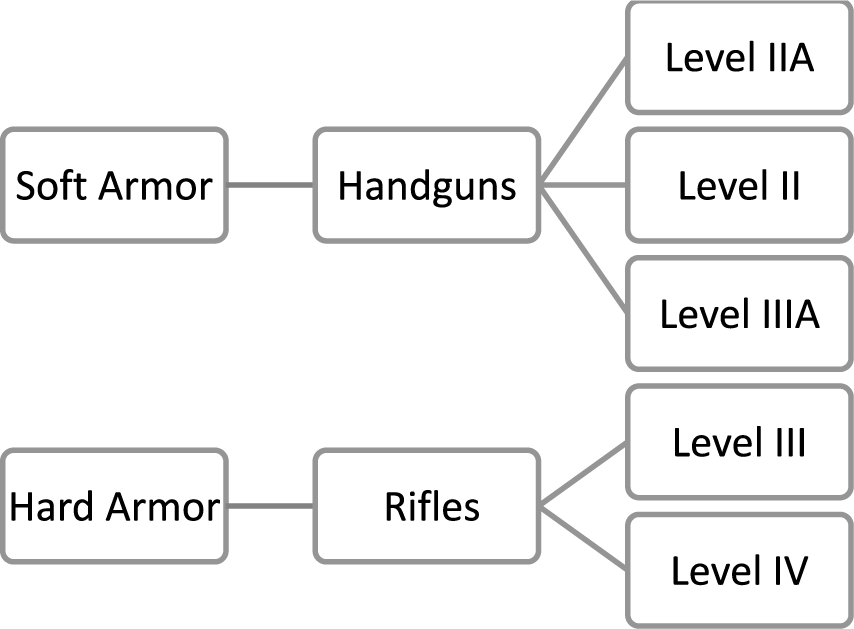
Basic NIJ Threat Protection Levels
Next, again, following the parameters set by the NIJ Standard-0101.06, I upgraded the threat levels as related to bullet calibers as follows:
Handgun Calibers
- Level IIA: 9mm FMJ 124-grain bullets at 1,225 fps and .40 S&W FMJ 180-grain bullets at 1,155 fps (six shots)
- Level II: 9mm FMJ 124-grain bullets at 1,305 fps and .357 Magnum JSP 158-grain bullets at 1,430 fps (six shots)
- Level IIIA: .357 Sig FMJ 125-grain bullets at 1,470 fps and .44 Magnum SJHP 240-grain bullets at 1,430 fps (six shots)
Rifle Calibers
- Level III: 7.62x51mm FMJ steel-jacketed 147-grain bullets (M80) at 2,780 fps (minimum of six hits)
- Level IV: .30 caliber armor piercing bullets (.30-06 M2 AP) at 2,880 fps (single hit).
In my next Exhibit No. 2, Basic Bullet Caliber Threat Level – as implied by the name, I present the same threat levels correlated to bullet calibers.
Exhibit No. 2 – Basic Bullet Caliber Threat Level
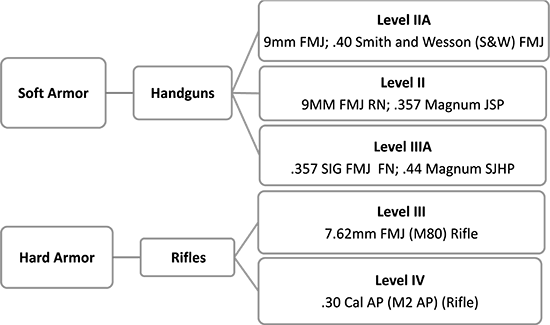
NIJ threat levels chart
Acronyms / Abbreviations
|
AP |
Armor Piercing |
|
FMJ |
Full Metal Jacket |
|
FN |
Flat Nose |
|
JHP |
Jacketed Hollow Point |
|
JSP |
Jacketed Soft Point |
|
SIG |
Sig Sauer |
|
SJHP |
Semi-Jacketed Hollow Point |
Hard Armor Vs. Soft Armor – the Differences
Soft Armor
There are, if you will, basic differences between soft and hard body armor and, while we shall be discussing critical material constructions further along in this article, suffice it to say for now, the most critical difference separating hard and soft body armor lies in their material composition.
Soft armor is typically made of nylon, aromatic polyamide synthetic fibers and ultra-high molecular polyethylene, which are all high-performance fibers with low density, high strength, great toughness, and excellent molding properties [more on this later].
What these materials will do for you is provide for a much lighter, softer, and easier to wear armor.
Like everything in life, however, it is all about tradeoffs.
What we are looking for when buying body armor should always be focused on protection, more so than comfort and/or looks, and we should never lose track of this perspective.
Ballistic panels in soft body armor are made, as I mentioned before, of strong woven, non-woven fibers and/or combination of both fibers sufficiently strong to stop certain bullets, much the same way that a net stops a tennis ball.
The “strike-face” in a ballistic panel, plate or insert is the face where bullets make their impact in the armor at which point, the impact of the projectile will be dissipated to the periphery of the impact point, this followed by the consumption of most of the kinetic energy.
This is how soft armor works in resisting bullet threats.
Needless to say, soft body armor is not as strong as its hard counterpart, while there are only three NIJ levels of threats related to soft body armor in the market: Level IIA, II, and IIIA, limited to stopping handgun rounds reliably.
For the record, most reputable body armor manufacturers do clearly identify the “strike-face” side of their plates and inserts.
Hard Armor
Hard armor refers to a combination of soft armor and hard plates.
These plates are made of metals, ceramics, high-performance composite plates, and other hard materials.
The heavier, harder plates make hard armor more heavy and more inflexible than soft armor, and, by default, more uncomfortable – again a protection vs. comfort trade off issue.In a shooting incident, the bullet first hits and cracks the hard plate, at which time most of the energy is dispersed as the high-performance fibers do their thing by consuming the rest of the kinetic energy.
Again, needless to say, hard body armor is far stronger than soft body armor thanks to the impenetrability of its internal plates.
Hard body armor can stop powerful rifle bullets under NIJ certified threat levels III and IV.
Body Armors Materials & Technologies
Introduction
So, it is fair to say that we should look at materials in body armor, much in the same way as we look at the heart in the human body – one that plays a vital, essential, and crucial role as far as what it represents in the bigger scope of things.
Matter of fact, we may even say that body armor protection is all about the various materials compositions used in the manufacturing of all ballistic plates inserts.
As such, this is a fascinating topic which deserves our undeserved attention.
It is a topic which combines a little of everything, chemistry, physics, quantum mechanics, physical science, etc.
And while I am certainly not a qualified expert in any of these disciplines, there is, nevertheless, an impending need to talk about a subject which may very well mean the difference in a life-or-death situation.All ballistic panels used in manufacturing bullet resistant vests are made-up of varied materials depending on the manufacturer.
As I explained earlier, body armor must pass specific standard tests before it can be sold, so the varied materials should all provide the same minimum levels of protection as set forth by the National Institute of Justice [NIJ].At the outset of this analysis, it is imperative we understand the overall purpose or objective of all materials and material compositions used in body armor constructions is that of stopping bullets and/or projectile threats – all things considered, not as easy a task as it may at first appear.
Stopping anything that is traveling at speeds as high as thousands of feet per second [ft/s], is not an easy task.
Vis-à-vis, it takes some very ingenious and creative solutions to identify materials capable of stopping objects traveling at such high speeds.
We should all be thankful for mankind’s ingenuity in the development of materials which have, in fact, been capable of succeeding in this highly challenging objective, while saving many lives along the way.
Soft Armor Materials
Para-Aramid Fibers
Whenever we talk about materials relative to soft body armor, the term “aramid fibers” and “para-aramid fibers” are terms we should all be familiar with given the critical role they play in the bigger picture.
Aramid fibers, short for aromatic polyamide, are a man-made class of heat-resistant synthetic fibers used for ballistic-rated body armor fabric and ballistic composites.Para-aramids were pioneered and first developed by DuPont™ who developed a meta-aramid called Nomax®.
Then again, whenever we talk about aramid fibers, as related to body armor, the name “Kevlar” ™ has a special place in history.
Discovered by DuPont’s chemist Stephanie Kwolek, Kevlar™ was first created for use in tires, while later giving rise to the so-called bullet resistant vest commonly seen today.
Matter of fact, the development of para-aramid materials revolutionized the bullet resistant vest industry as it allowed for body armor manufacturers to develop vests that were lightweight and flexible while still offering a prominent level of protection to wearers.
Some of the most popular and commonly used materials used for bullet resistant vests include Dupont’s™ Kevlar® and Teijin’s Twaron, ® both para-aramids that have been used in body armor manufacturing now for decades.
I must say, Kevlar® has gone through several transition stages, all for the ultimate benefit of the body armor wearers.
Since first introduced to the world in the 1970’s, its first version Kelvar®29 was revolutionary for the body armor industry as it allowed for the production of protective panels that were both flexible as well as concealable, which meant that DuPont™ could now produce a body armor which was lightweight and yet could be worn comfortably by people on a day-to-day basis for prolonged periods of time.
DuPont continued to develop Kevlar® and in 1988 they released their second version known as Kevlar®129.
This new and improved version was even lighter than its predecessor while offering yet increased ballistic protection for wearers, including protection against high-energy rounds from weapons like a Full Metal Jacket [FMJ] 9mm.
The most recent version of Kevlar® was released in 1995, named Kevlar® Correctional.
This revolutionary updated version can stop attacks from knives and similar weapons and led to the production of lightweight, multi-threat forms of body armor capable of stopping both ballistic and stab threats.
Ultra-high-molecular-weight Polyethylene
Our next stop in soft armor materials is the ultra-high-molecular-weight polyethylene or UHMWPE for short, another popular choice for ballistic panel construction, used today in many modern types of body armor.
While retaining many similar characteristics as those found in the para-aramid fibers, this is a type of polyolefin made up of extremely long chains of polyethylene.
No need to feel bad about your lack of chemistry background in knowing or understanding more about “long-chain” molecular composition – that makes two of us. Good enough to know this is a resilient material and/or one which has a stronger build than do para-aramids.
Research has shown that the strength-to-weight ratio for UHMWPE can be up to 40% higher than that of traditional para-aramid fibers.
The added-value features offered by UHMWPE in the body armor market paved the way for an increased interest by some major plastic resin manufacturers in developing new proprietary products using ultra-high-molecular-weight polyethylene, such as Dyneema’s® DSM fiber and Honeywells’ Spectra®.
Hard Armor Materials
Hard Armor – Overview
So, for obvious reasons, as we begin to discuss hard armor materials, the threat levels rise to the highest expectations in terms of ability of body armor stopping rounds of larger caliber, higher bullet weights and higher velocities as well – all told, a core need for stronger materials capable of resisting such enhanced threats.
As such, the body armor industry had to identify and/or develop materials in a manner consistent with an ever-expanding ballistics industry which focused on the very opposite goal, namely the production of ammunition with potentially more lethal results – an ongoing challenge which still, to this day, serves as the basis for measuring-up to the expectations of all concerned.Hard armor is typically made of metal, usually steel but sometimes other alloys as well.
Hard armor is also made of polyethylene and ceramics such as aluminum oxide, silicon carbide or boron carbide and/or combinations of them.
While hard armor may come in many sizes, shapes, and weight variants, regardless, they are typically heavier than their soft armor counterparts, if yet offering greater protection from higher caliber rounds.
In the end, again, all about a trade-off between safety and comfort – a decision which shall be ultimately made by the user relative to the pretended mission objective.
Steel Armor / AR500
One of the most common and cheapest materials used in hard armor construction is steel.
While steel plates can provide the wearer with a good deal of protection, the downside is that they are relatively heavy.
Steel armor plates also tend to cause excessive spalling which can sometimes lead to collateral fragmentation injuries from the ensuing shrapnel.
Lots of folks ask what AR500 steel is?
The short answer is AR500 steel is hardened steel specifically designed to be abrasion resistant.
Might as well point out that AR500 steel is not certified through the National Institute of Justice [NIJ].
AR500 will, more likely than not, stop all handgun bullets but it is not guaranteed to stop rifle caliber bullets as well as they are not effective against smaller pieces of shrapnel and higher velocity rounds – a common misconception which may lead many newcomers into making the wrong decision when purchasing an AR500 steel plate insert.
The AR500 armor is a plate not a vest.
Weighing at 8+ pounds, they are reasonably inexpensive while capable of lasting for years.
AR500 armor comes in varied sizes, shapes including side plates, rectangular back plates, and backpack plates.
Pros and Cons of Steel Armor
Pros
- Steel does not require the maintenance that does ceramic, polyethylene, or Kevlar.
- Steel will accept wear and tear without degrading the armor.
- Steel is the cheapest of any armor material.
- Steel can be used more concealable than most Kevlar and ceramic plates.
Cons
- While steel may help you save your life, certain hits could cause collateral damage to other parts of your body.
- Steel is more uncomfortable than other armors as it is harder to conform to your body.
- Steel is the heaviest of all the armor materials used. Generally, it is about 10.2 lbs. per square foot.
- Armor-piercing bullets are specifically designed to defeat steel armor.
- Steel armor poses a threat from a bullet round that bounces off the steel and ricochet into other parts of your body. Steel armor absorbs the energy from a bullet, but it redirects its trajectory, sometimes in unpredictable manners.
Ceramic Armor / Boron Carbide
Ceramic is an inorganic, non-metallic material, customarily made from nitride or carbide.
Ceramic has been used in body armor applications since the Vietnam War.
Its popularity responds to its lightweight properties.
Nowadays, modern ceramic armor is generally made of a composite that features “boron carbide.”Boron carbide is an extremely hard born-carbon ceramic and covalent material, one of the hardest materials known to humankind right behind boron nitride and diamonds.
Nowadays, boron-carbide is used by our military in everything from tank armor to ballistic shields and body armor.
While incredibly rigid and hard it is still capable of absorbing and deflecting energy.
Pros and Cons of Ceramic Armor
Pros
- Lightweight – ceramic is often about 5-6 lbs. per square foot versus the 10.2 for steel.
- Ceramic has better absorbing and dispersing energy capabilities than does steel. This will result in less collateral damage to other parts of the body.
- Ceramic does a better job protecting wearers against supersonic armor-piercing bullets.
Cons
- The thickness of ceramic plates can often reduce mobility.
- Ceramic plates cannot manage multiple rounds in the same area. Once a ceramic plate is hit, it normally shatters upon impact. It is great at stopping 1-3 rounds, but steel is better at stopping multiple bullets.
- Normally, ceramic plates cannot manage multiple rounds in the same area.
- Ceramic plates are relatively much more expensive than other plates.
- Ceramic plates demand much more care and maintenance. Life-expectancy of ceramic plates is estimated at approximately 5 to 7 years.
Polyethylene Armor / UHMWPE
Well, you may recall, we have already discussed the use of Polyethylene and/or the specific variant ultra-high-molecular-weight polyethylene or UHMWPE for short as applied in soft armor applications.
The reason I am listing it here too is that this material is also used in hard armor applications as well.
As noted earlier, UHMWPE is rated as one of the most durable thermoplastics produced.
Known for having excellent chemical inertness, self-lubricity, and impact resistance.
Also proven to be more abrasion-resistant than carbon steel.
Pros and Cons of Polyethylene [UHMWPE] Armor
Pros
- UHMWPE is lightweight.
- Has superior chemical inertness helping to keep wearers from chemical reactions to the body.
- UHMWPE has superior self-lubricity with reduced armor friction. As such the armor can move freely and last longer.
- UHMWPE can stop multiple bullets in the same strike area without fear of cracking, deflecting, or reducing its effectiveness.
Cons
- UHMWPE is more expensive than other hard armor material construction.
Zylon – Beware
Cannot depart this materials section without forewarning all readers to avoid vests made of Zylon – a wonder fiber that was used in high-end lightweight vests starting in the late ‘nineties later found to deteriorate when exposed to light, heat and moisture.
While no longer made, be wary as there are, still, some second-hand market Zylon vests out in the marketplace and, to be sure, they are not safe to use.
Keys to Selecting the Right Body Armor
A Quick Overview
So, I have already spent some time acquainting you with some extremely basic and fundamental information regarding body armor.
Whether you are a first-time buyer or an experienced repeat buyer, either way, there are, in my estimation, certain criteria which we all should consider when buying body armor, regardless.
My objective here today is to try and guide you through your purchasing protocol in such a way as to make this a pleasurable and sensible experience – one you can always depend on and be pleased with in years to come.How about if I start up our shopping journey by telling you all there is not such a thing as the “best” armor out there that I know of; there are, instead, different systems with different applications for different people and different mission objectives.
Cannot be any clearer than that, can I?
Vis-à-vis, as I tell all my friends, purchasing body armor is all about “trade offs” and “compromises” as, once again, this is not one of those “one-size-fits-all” type of product- matter of fact, quite the opposite.
That said, following are some of what I consider key criteria we should all take into consideration when purchasing body armor.
Key Criteria No. 1 – Define your Mission
I dare say, [the] most crucial decision you need to determine when considering which body armor to buy is to define what you really need it for.
Your ultimate mission objective will be the foremost consideration to guide your purchase.
For example, the requisites of body armor to be used in a military or law-enforcement environment are, as you may expect, quite different from those for civilian use.
Key Criteria No. 2 – Define the Level of Protection
Once you have satisfied your mission objective, next you want to define the likely level of threat which you anticipate while using your armor.
I take for granted the fact that, whichever armor you chose, you will always purchase an NIJ Certified product and not just a “compliant” version.
Your anticipated level of protection is always relative to your mission objective.
Whether you expect to be in a conflict zone exposed to small-arms fire and A.P. rounds, or whether you are in law-enforcement, whichever the case, you should always abide by the threat level standards provided in the NIJ Guide-0101.06.
Key Criteria No. 3 – Weight, mobility, and comfort
Generally speaking, more protection equals more weight.
And more weight equals less mobility and comfort.
Matter of fact, the more uncomfortable the armor the less likely you will want to wear it at a time when you may need it.
As a matter of record only, body armor is not meant to be worn loosely to make it more comfortable; armor is tested and certified while snuggly fitted against backing material and may not perform according to specs otherwise.
Key Criteria No. 4 – Concealability
The level of concealability and/or need to conceal your armor will be a key determining factor on which armor best suits your needs.
It will further narrow your choices relative to the thickness and bulkiness of your armor.
Ironically, with hard plates, thinner usually equals heavier since the lighter polyethylene options are also the thickest.
Key Criteria No. 5 – Weather and Wearing Conditions
One important criterion that we must all consider when purchasing an armor has to do with weather and wearing conditions.
Colder environments will allow wearers to consider armor that can be worn for prolonged, lengthier periods of time.
Warmer or hot weather, on the other hand, very much limits the types of armor available to you.
Some armors are better suited than others for certain weather conditions.
Key Criteria No. 6 – Care and Maintenance
Bear in mind that all body armor, regardless, should be treated with care.
That said, however, remember some materials require more care and maintenance than others – in particular, ceramic materials used in hard armor require more care than do some of its counterparts.
I should also point out the fact that some soft armor materials require extra care as moisture may offset their expected protection capability.
Exposure of body armor materials to extreme heat can also affect its performance levels, which should be of great concern to anyone.
Key Criteria No. 7 – Cost
While I am very much aware that we all have limits and limitations as to how little or how much money we spend on buying anything in life, body armor is the one item where I would not advise anyone to be too stingy.
Think about it this way, your life has no price.
When it comes to saving your life, there is not any such thing as “too expensive.”
Body armor is the one item where penny-pinching may very well cost you your life.
That said, however, I am happy to report, there are all kinds of body armor price-point levels available in the marketplace today.
Body armor variations are such to where you can still buy reasonably good armor at a rather competitive price without sacrificing protection at all.
Similarly, if money is not an object, you are also likely to find an armor that equals the best that money can buy.
Either way, in the section below, I will be providing you with some of the options which I feel have the best to offer in the various categories of armor I have covered thus far in this article.
Best Body Armor: Our Top Picks
Soft Body Armor Level II & IIIA
1. Armor Express Halo – Soft Body Armor
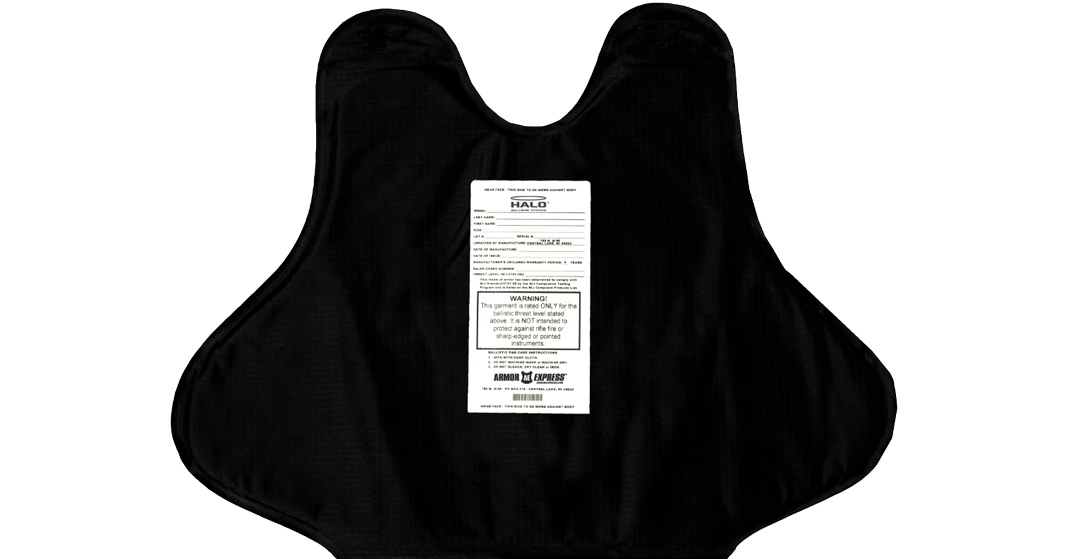
Armor Express Halo Level II Soft Armor
The Halo soft body armor is an NIJ Certified system designed mostly for comfort and protection featuring:
- Made of woven Teijin’s Twaron, ® para-aramids microfilaments.
- Threat Level: II
- Thickness: 0.21 inches
- Weight: 0.92 lbs./ft.
- Highly Flexible.
- Designed for comfort and protection.
ConClusion
At a threat level II, this is the lowest threat-level of my picks.
This system is as simplistic as it comes while still being NIJ Certified.
If you can settle for less protection but want to keep quality and craftsmanship this armor has all you need.
If what you are looking for is simplicity, I would give this one some consideration.
Specific Protection: 9mm, V-50: 1617 fps. Magnum V-50: 1606 fps. Avg. 9mm BFS: 34.4mm.Avg. .357 Magnum: 37.5mm.
2. AR500 Armor – Soft Body Armor
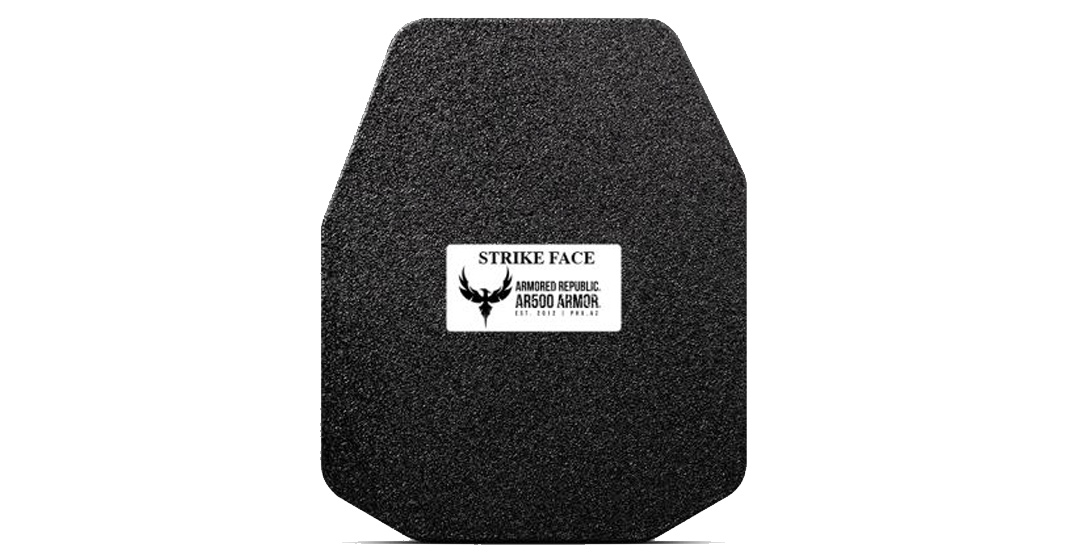
AR500 Level III Soft Body Armor
So, the Armored Republic AR500 has both Level II and IIIA armor panels that can be used in vests, backpacks and messenger bags featuring;
- Thin: Level II Rimelig is 0.45” thick | Level IIIA Rimelig is 0.55″ thick | Level IIIA Slim is 0.36” thick | Level IIIA Hybrid is 0.25″ thick.
- Flexible materials for all-day comfort.
- Patented Advanced Shooters Cut for max comfort and mobility
- Laminated ripstop nylon covers with sonic-welded seams for durability and strength
- Compatible with nearly all plate carriers capable of accepting 10’x12” or 11”x14” rifle plates, and compatible with our line of trauma pads
ConClusion
The AR500 is offered in four basic configurations of varied sizes and thicknesses as follows a) Level II Rimeling, b) Level IIIA Rimeling, c) Level IIA Slim, and d) Level IIIA Hybrid.
The Rimeling version is constructed with imported para-aramid fibers and is designed, cut, sewn, and assembled in the USA.
The Slim is made of two separate aramid layers.
At only 0.36” thick this system only weighs 1.25 lbs.
The Hybrid version is made of Honeywell’s Spectra® ultra-high-density-molecular-polyethylene.
All versions are designed to be ultra-thin and comfortable.
Specific Protection: Level IIIA rated for pistol calibers up to .357 SIG and .44 Magnum. Level II rated for 9mm and .357 Magnum.
4. Safe Life – Soft Body Armor Concealable Multi-Threat
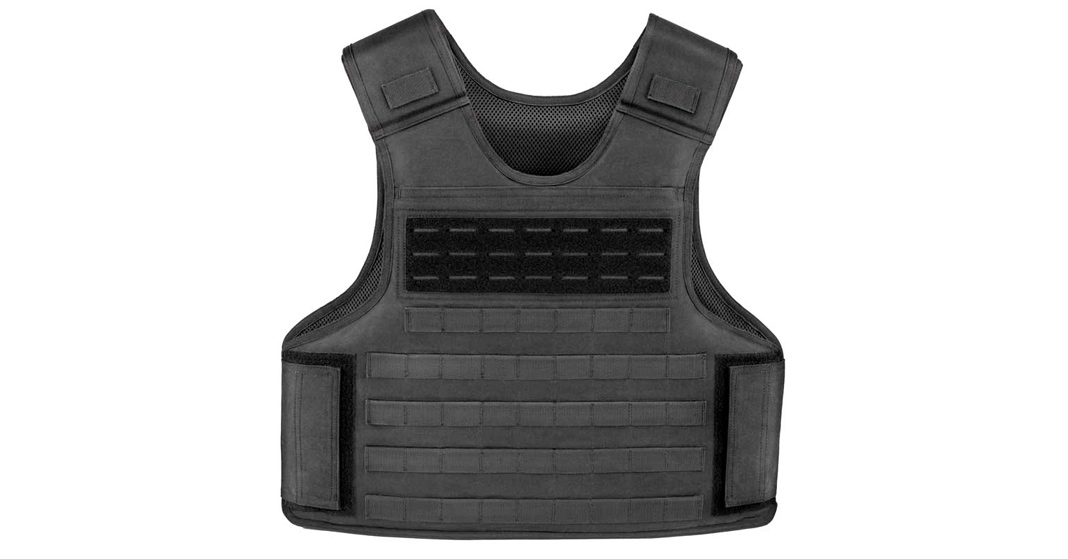
Safe Life Tactical Multi-Threat Vest Level IIIA
This concealable multi-threat vest is engineered with Self Structured™ panels of custom para-aramid fibers and features:
- Bullet, strike & slash resistant.
- Full side protection – 15% More coverage.
- Ultra-concealable.
- Engineered for comfort and maneuverability.
- Cooling mesh liner.
- 10 Point adjustable with 4 Comfort Straps.
- 2 Hidden pockets for level IV hard plates.
- Water resistant polyester carrier.
ConClusion
This system is constructed with sturdy custom para-aramid material which the manufacturer claims will not only stop bullets, but it is also strike and slash resistant.
It comes standard with wrap around protection, and it is guaranteed to fit, or you can exchange it.
This system comes with a 5-year manufacturer warranty on all ballistic panels and plates.
Well-constructed and comfortable, in my opinion this one is well worth the money.
Specific Protection: Common handgun rounds including .357, 9mm, 45acp to .44 Magnum. Shotgun round including 00 buckshot, 12 ga slugs and submachine gun rounds.
4. Body Armor Direct Freedom – Soft Body Concealable Enhanced Multi-Threat Vest
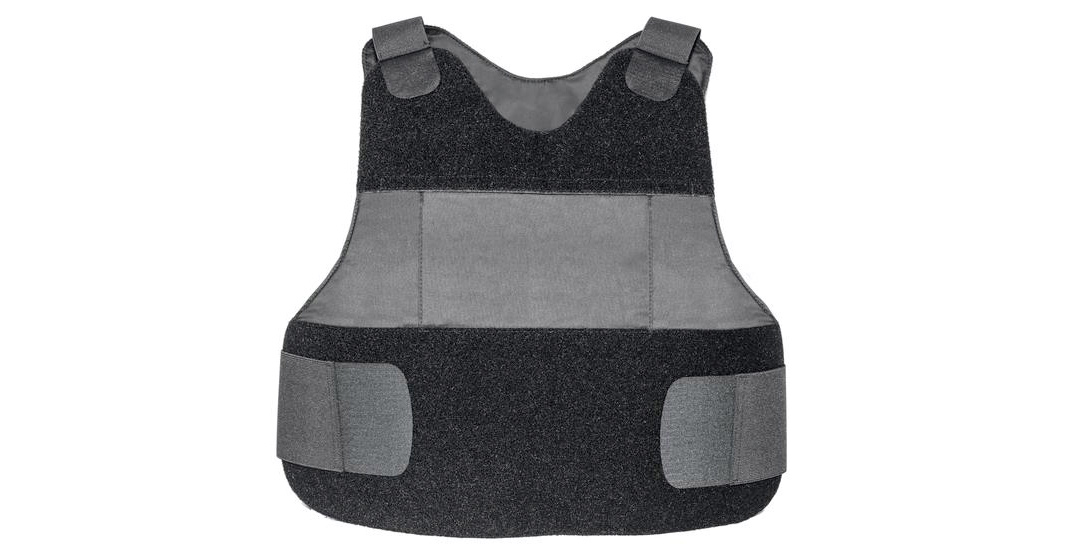
Freedom Concealable Multi-Threat Vest
The Freedom Concealable Multi-Threat Vest is NIJ Guide-0101.06 Certified Level IIIA and features:
- Level IIIA Certified Ballistics.
- Multi-Threat Protection.
- Low Profile Design.
- Lightweight Construction.
- All-Day Comfort.
- 4 Point Adjustable Strapping System.
- Overlapping Side Coverage.
- Available in Light, Lighter, & Lightest Options.
- Moisture-Wicking, Anti-Microbial Inner Liner
- Easily Washable.
ConClusion
This system wears comfortably as a stand-alone or under your hard armor, either way.
It offers great concealability and great fit without any sacrifices on comfort.
It is lightweight and easy to adjust.
It has good artisanship at a very reasonable price in what it offers.
Made in the USA, this is a preferred system among many tactical entry teams.
Urge you to consider this one.
Specific Protection: Common handgun rounds including .357, 9mm, 45acp to .44 Magnum.
5. Crye Precision LVS Base Vest Patrol Cut – Soft Body Armor
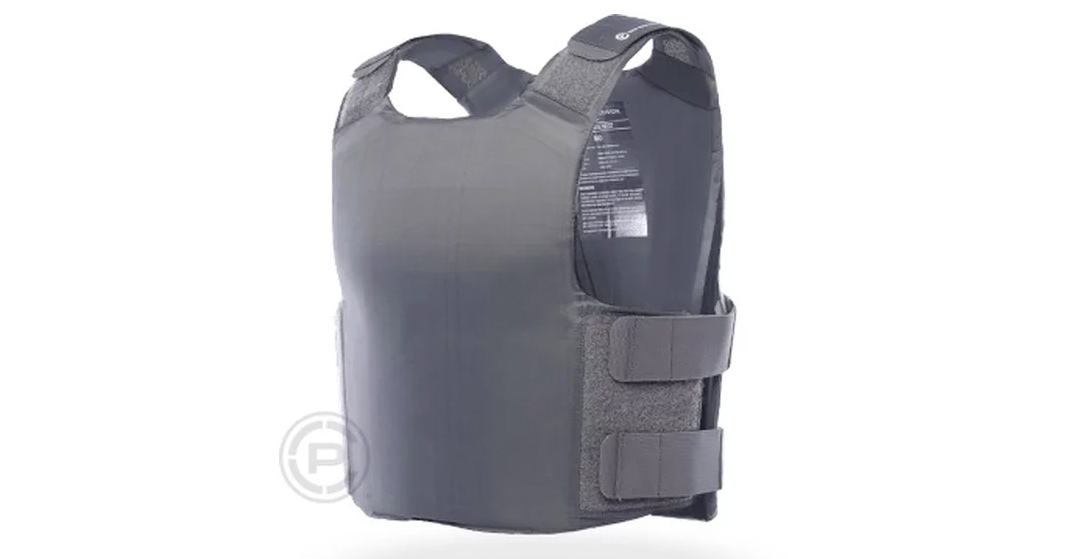
Crye Precision LVS Base Vest Patrol Cut
The Crye Precision ™ LVS Base Vest Patrol Cut is an NIJ Guide-0101.06 Certified Level IIIA system which features:
- Proprietary IAV (Insert as Vest™) architecture dramatically reduces bulk and printing.
- 3D formed armor panels match the human body – delivering enhanced comfort & concealment.
- Base vest includes 2 built-in pockets suitable for radio, rifle mag, pistol, or pistol mags.
- Antimicrobial fabrics used throughout.
- Proprietary forming technique eliminates crumpling of armor.
- Wide range of optional carriers allow one system to economically cover many roles from low vis to overtly tactical.
- Optional side armor panels are available.
- 2” and 4” elastic side straps provided with vest.
ConClusion
The front panel on the Crye Precision ™ LVS Base Vest Patrol Cut was narrowed at the upper chest area for improved mobility.
This one is concealable with proprietary three-dimensional forming technology that allows to shape the vest directly to match the contours of your body, which ultimately translates into great comfort.
The LVS Base Vest system requires no external carrier.
This system is NIJ Certified which gives you that added-value confidence we all look for in body armor.
Must give this one consideration.
6. Battle Steel – Flexible Soft Body Armor
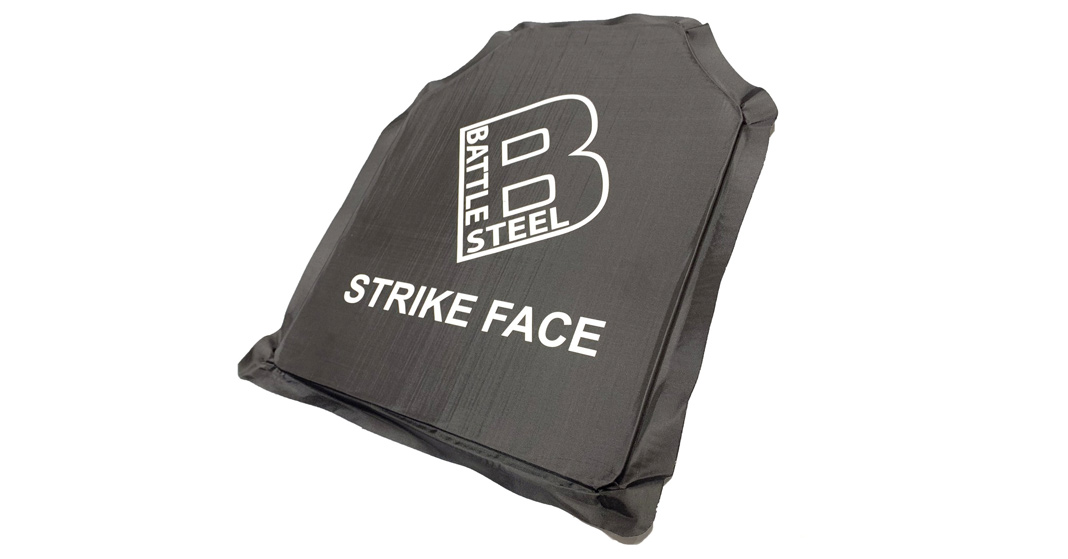
Battle Steel Level 3A Flexible Armor
I picked the Battle Steel Flexible Armor only as an example of armor that is quite affordable if yet does not sacrifice any of its protection capabilities.
While not certified, the manufacturer claims to have tested this system to NIJ Level IIIA specifications.
Following some of the features and specifications.
- Ballistic Material: Polyethylene
- Thickness: 6.5mm.
- Exterior Cover: Polyester.
- Warranty: 5 years from date of sale.
- Made in the USA from imported materials.
- Size / Weight: 10×12 Shooters – 1lbs / 11×14 Shooters – 1.5lbs / 10×12 Square – 1lbs / 11×14 Square – 1.5lbs.
ConClusion
Other than being quite affordable, at 1.5 lbs., this is a lightweight system that you can fit discreetly and retain mobility.
This system clearly indicates the wear and strike face.
Should be an excellent fit for a backpack.
Specific Protection: 9mm / 44 Magnum.
7. Premier Body Armor Eagle Tactical Vest – Soft Body Tactical
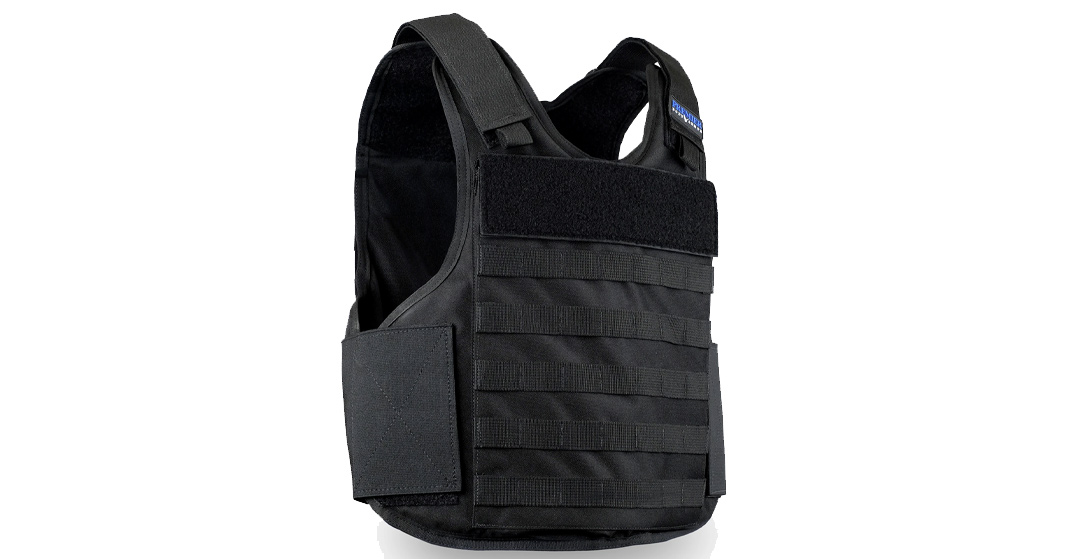
Premier Body Armor Eagle Tactical Vest
So, first, the Premier Body Armor Eagle Tactical Vest includes NIJ Certified Level IIIA soft ballistic panels. Following some of its principal features:
- Front and rear plate pockets accommodate optional Level III rifle rated plates.
- Elastic-stretch side closure and adjustable shoulder straps.
- Adjustable internal cummerbund.
- Reinforced man down strap.
- Four strips of MOLLE on the front and six strips on the back for configurable. pouch placement.
- Constructed of a domestic 600 Denier Polyester.
- Duty-rated durability.
- 360-degree coverage.
- Reinforced drag handle.
ConClusion
The one feature which I thought stands out in this vest is versatility.
You get Level IIIA armor built-in throughout the whole front and back of your body.
For added protection, you can also add Level III plates to both the front and back pockets of the vest.
If looking for a flexible body armor with all around protection, I strongly suggest you check this one out before making your final decision.
Specific Protection: This vest includes Level IIIA soft panels. Front and rear plate pockets accommodate optional Level III rifle rated plates. Armor with this rating can protect against 9mm or .44 Magnum submachine gun ammunition.
8. Innocent Men’s “Bulletproof” Leather Jacket
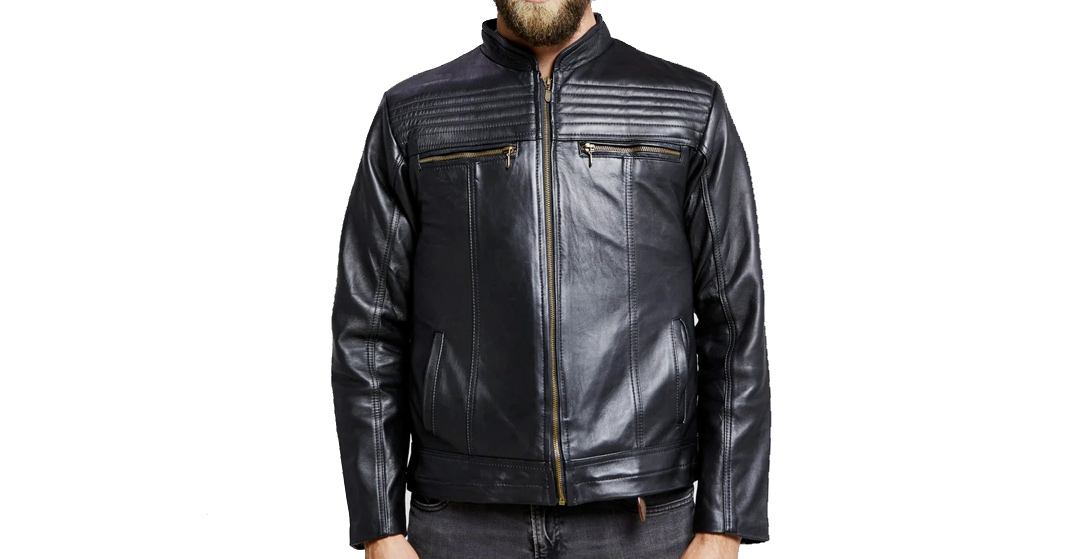
Innocent Armor Bullet-Resistant Men’s Leather Jacket
For many common folks that are looking for simplistic armor, I could not pass the opportunity of introducing you to this Innocent Men’s Leather Jacket.
This could be the epitome of discreet and stylish protection featuring:
- ShieldTec® certified NIJ level IIIA protection
- FitTec™ is a technologically engineered panel system that proves wrap-around custom fit.
ConClusion
If what you are looking for is great body armor that does not look like body armor – this is it.
This is your ultimate conceal carry with a stylish finish.
The outer shell is made of soft leather with great fit and has no limits in mobility.
This is a solid system with great looks and incredible concealability.
Strongly urge you to consider this one for simplicity and uncompromised protection.
Specific Protection: Level IIIA rated for pistol calibers up to .357 SIG and .44 Magnum.
Hard Body Armor Level III
1. Safe Life Defense FRAS [Flexible Rifle Armor System]
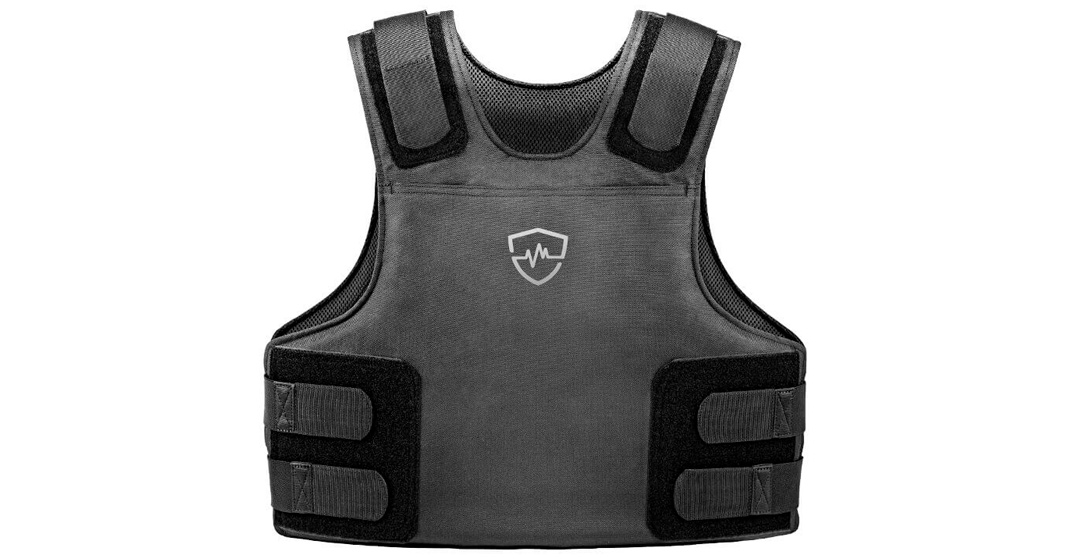
Safe Life Defense FRAS
So, I picked the Safe Life Defense FRAS™ [Flexible Rifle Armor System], as this system offers the best of both worlds.
This hard body armor feels and conceals just like any soft armor would, with panels that provide full front, rear and side coverage while still lighter than most traditional rifle plates.
Some of the key features in this system are as follows:
- Flexibility: Conforms and Feels like Soft Armor.
- 360° Wrap Around Protection: Full Front, Rear and Side Coverage.
- Extreme Comfort: Easy to Wear for 12+ Hours.
- Cooling Mesh Liner.
- 10 Point Adjustable with 4 Comfort Straps.
- 2 Hidden Pockets for Additional Rifle Plates.
- Water Resistant Polyester Carrier.
- 30 Day Fit and Satisfaction Guarantee.
- 5 Year Warranty and Incident Guarantee.
ConClusion
I say this system has it all.
The FRAS™ is easy to wear all day and can even be concealed.
Even though the FRAS™ panel is flexible, the blunt force protection is the same as traditional hard armor.
All ratings are well within the NIJ standard of 44mm for Backface Deformation [BFD].
This system feels just like soft armor.
It covers your entire torso without adding the weight that typically comes with such features.
On the average, the panels weigh only 16 lbs., making them much lighter than its steel and ceramic plate counterparts.
This system comes with a 5-Year warranty.
This is a must to consider if you are looking for protection and comfort.
Specific Protection: Rated to stop .223/5.56 and 7.62×39 lead core ammo. Handgun, Shotgun, Strike, Slash, Stab & Taser Resistant. Spike Rating: NIJ Level III up to 65 Joules of Force. Rated to defend against all the most common .223 and 5.56 rounds including Green Tip, M193, M855 and SS109.
2. AR500 – Stand-alone Hard Body Armor III
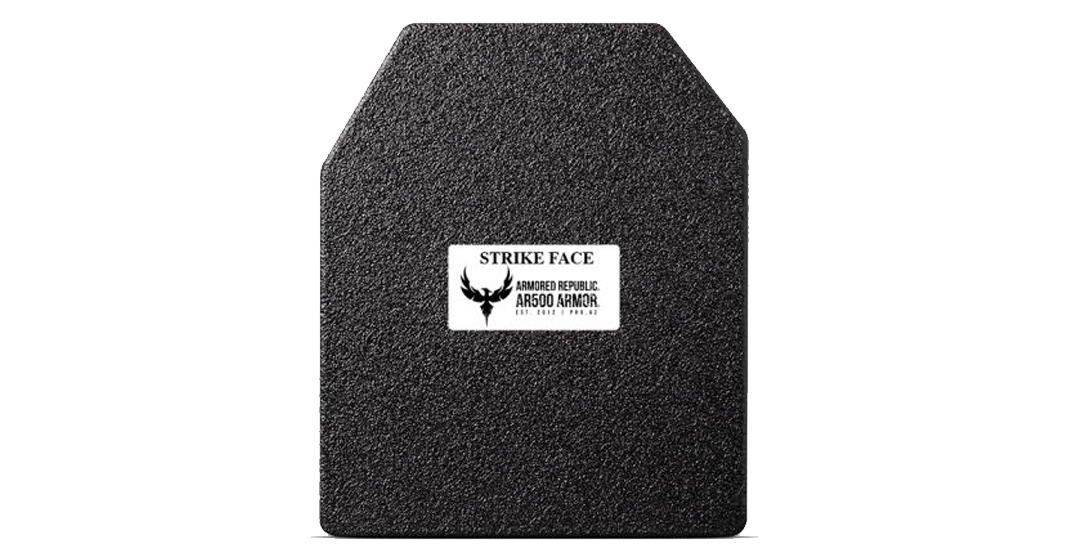
AR500 – Stand-Alone Hard Body Armor III
My next pick in this hard body armor category is the AR500 from this very reputable line of body armor.
The stand-alone AR500 Level III is a rugged plate able to stop military armor piercing rounds of up to 3,100 fps, with its multi-hit capacity.
The AR500 features:
- Material: Ballistic steel of 650 hardness on the Brinell scale, with FragLock™ coating.
- Capability: Edge-to-edge multi-hit protection.
- 10”x12”: Base Coat: 8 lbs., Build-Up Coat: 9.5 lbs.
- 11”x14”: Base Coat: 10 lbs., Build-Up Coat: 11.5 lbs.
- Shelf life: 20 years
- Compatibility: Testudo, Veritas, Valkyrie, Independence & Invictus Carriers.
- Manufactured: United States.
ConClusion
I must begin by acknowledging that the name Armored Republic and AR500 are synonymous with some of the best body armor systems in the marketplace – that simple.
This Level III Steel Plate can stop threats such as 7.62×39/7.62×51/5.56 M193s, 5.56 M855 penetrators, and .223/.308 WIN rounds.
And unlike ceramic or polyethylene, steel can take hits from these rounds without fail.
This multi-hit special threat resistance is a distinguishing quality of this Level III armor.
This plate features a patented Advance Shooter Cut with improved comfort and ergonomics affording extra room for a rifle cut.
The manufacturer claims this system can reduce the dangers of spalling and fragmentations.
A second coat on this plate provides for a maintenance-free shelf life of twenty years – longer than most other polyethylene or ceramic alternatives.
This is one of those very affordable but good systems which should be at the forefront of your considerations in this higher threat Level.
Specific Protection: 5.56×45 M193, 5.56×45 M855/SS109 at 3,100 FPS (+/- 30FPS), 7.62×51 M80 Ball (i.e., .308) at 3,000 FPS (+/- 30FPS), and DEA Certified FPS and 5.56mm M855/SS109 (Green Tip) at a velocity of 2,780 FPS.
3. DFNDR Level III Hard Body Armor
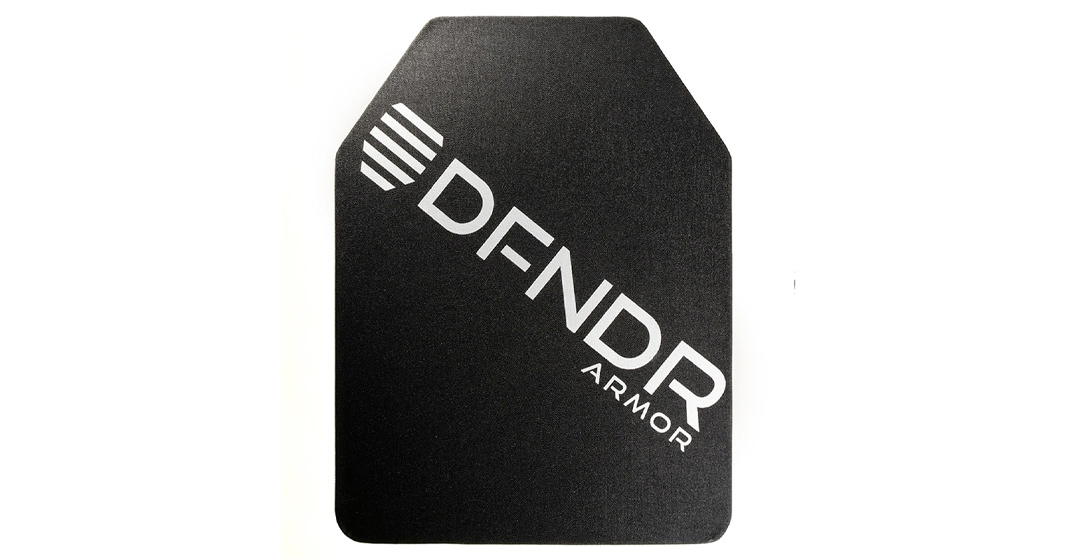
DFNDR Level III Hard Body Armor
At 4.1 lbs., this medium size state-of-the-art hard armor plates are designed with multi-curve profiles to provide for an ergonomic and comfortable fitting armor system which you can wear all day without imposing a hardship on your body.
Some of the system’s most key features include the following:
- State-of-the-art Trauma Mitigation Base.
- Crystalline Ceramic Strike Face.
- Proprietary Structural Reinforcement technology.
- Backing material: UHMWPE fiber.
- SAPI and Shooters Cut.
- Hard stand-alone armor equipped with Spall-Tek to reduce deflection of projectile fragments.
ConClusion
While a little pricier than some of its counterparts, the DFNDR is intended to wear well against your body all day long.
This system is independently tested at an NIJ Certified Ballistic Lab and is certified to the NIJ 0101.06 standards in a stand-alone configuration.
This armor can be inserted into almost any plate carrier but is specially designed to perform with the DFNDR Armor® QRC System.
Must check this one out.
Specific Protection: The DFNDR Armor® Rifle Rated Level III system was developed specifically against the 5.56×45 M855 (SS109) Green Tip penetrator. This system is also rated to defeat the Mild Steel Core Chinese and PS Ball Russian 7.62×39 AK-47 threats and standard steel jacketed/lead core .308 and copper jacketed/lead core 7.62, .223 and 5.56 threats.
Hard Body Armor Level IV
1. RMA Armament Hard Body Armor Plate

RMA Armament Hard Body Armor Plate
So, my top pick in this Threat Level is the RMA Armament Hard Body Armor Plate.
Primarily, the RMA’s Level IV body armor plate (Model #1155) is an NIJ Guide-0101.06 Certified system made in Centerville, Iowa.
Before going any further, I should point out that, whenever we discuss Level IV systems, we are talking, as discussed earlier, the highest possible protection level, which may be reserved for those anticipating exposure to higher threat levels.
Suggest you keep this mind for all Level IV systems.
Some of the key features in the RMA include the following:
- 10″x 12″ Stand Alone, Edge-to-Edge Protection.
- 10 Year Manufacturer’s Warranty.
- Single-Curve, SAPI/ESAPI-Cut.
- 8.3 lbs.
- Thickness: 1″
- Monolithic Ceramic & Polyethylene.
- 600 Denier Water Resistant Cover.
- Made in Centerville, IA – USA
- RMA Hard Armor Warranty Policy
ConClusion
Owned and operated by a former police officer and US Marine, the RMA is one of the most sought-after brands of armor plates by the law enforcement community.
This very affordable system is proven to be one of the strongest, top engineered and most efficient systems in the market today.
If you are looking for a Level IV protection, you should definitely check this one out.
Specific Protection: Rated to defeat up to 30.06 armor piercing rounds, plus many other popular rounds like m855a1, m193, 7.62×39 msc, .308 and many more.
2. HighCom Guardian 4s17m Hard Body Armor
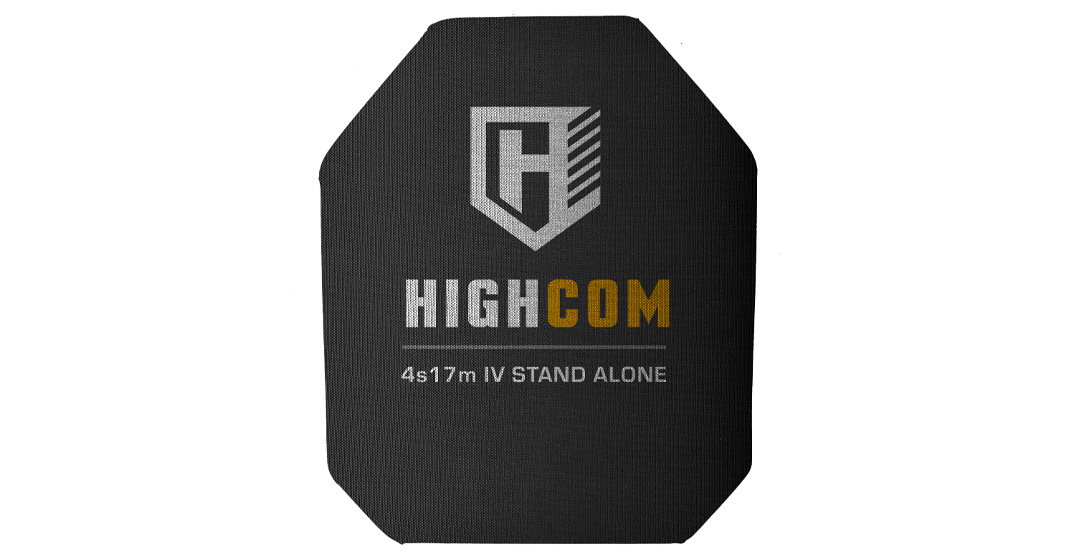
HighCom Guardian 4s17m Hard Body Armor
The HighCom Guardian 4s17m is one of my top rifle armor solutions.
This Level IV, stand-alone multi curve plate provides armor-piercing protection at an affordable price point.
The 4s17m system is NIJ 0101.06 “Certified” and can be found listed on the NIJ’s CPL (Compliant Product List).
Its principal features and specifications include:
- Material: Ceramic strike face composite backing
- Exterior Cover: 1000D CORDURA®, Textured Nylon.
- Cut: Available in Shooters and SAPI (10” x 12” shooters cut is considered nominal 9.5” x 11.5” dimensions).
- Thinness: 0.95”
- Warranty: 10 years on all ballistic material excluding exterior cover and 1 year on exterior cover material and workmanship
ConClusion
I say this multi-curve, stand-alone ceramic HighCom Guardian 4s17m must be one of the best Level IV systems out there for the price.
This is a lightweight comfortable system.
These quality plates are reasonably priced while you can tell they are well constructed for a great fit.
Highly recommend you check this one out before making your final decision.
Specific Protection: NIJ 0101.06 -Rifle .30 caliber armor piercing (AP) bullets (M2 AP). DEA: Hard Armor Protocol Compliant. RST: Rifle Special Threats Validated.
Summary & Conclusion
As I said earlier at the beginning, unlike the many articles I have written on tactical gear, this one on body armor, was, I must admit, a most challenging undertaking given the fact that I was dealing with a subject-matter which may very well mean the difference between life or death, albeit a task not to be taken lightly, which I believe I did not.
While I tried my best giving you a comprehensive outlook on this extraordinarily complex topic, it is a virtual impossibility for me, or anyone else for that matter, to try and cover in a few words, an immensity of detail, all of which is inherently relevant to becoming familiar with this product line.
As such, I politely urge you to further acquaint yourself with as much information as you can on what could very well be a life-saving decision.
If you take nothing else with you from this article, please remember the most important thing you need to think about when considering the purchase of a body armor is determining what you need it for – what your mission will be.
Also, please remember, as I have repeatedly said in this article, when it comes to buying body armor it is all about “trade offs” and “compromises.”
Threat levels, weight, comfort, concealability, fit, mobility, are all major considerations, however all to be thought of as a “balancing act,” to where you know ahead of time, you will never be able to get all you want all-in-one.
That said, I sincerely and honestly hope to have been instrumental in leading you in the right direction on your body armor purchasing experience and hope, whichever system you choose in the end, will prove to be the right one for years to come.
On that note, I bid you good-bye for now and wish you the best on your purchasing journey. Thank you.

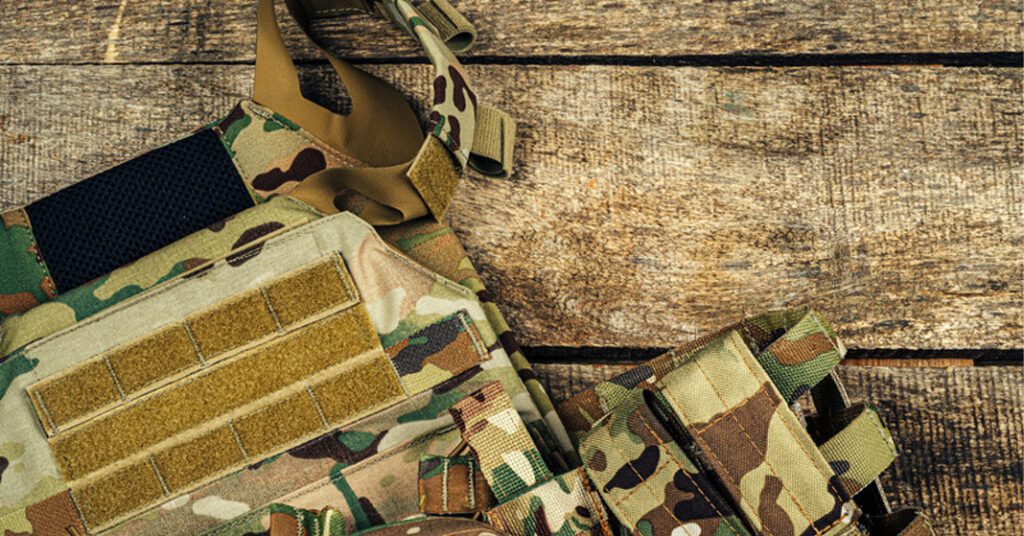
It made sense when you mentioned that body armor is developed to provide ballistic security to the vital organs in the torso. My friend told me that their team needs a first responder level 3A vest. I should advise him to look for a supplier that offers top-quality defense gear.